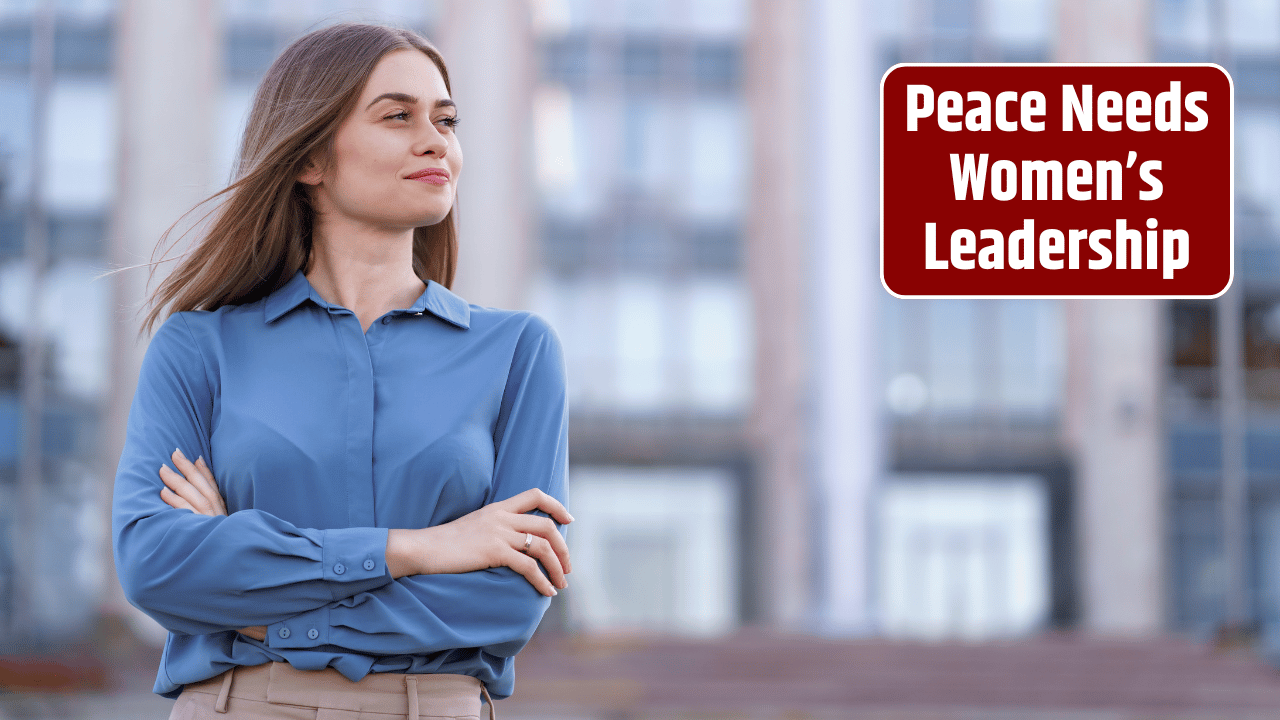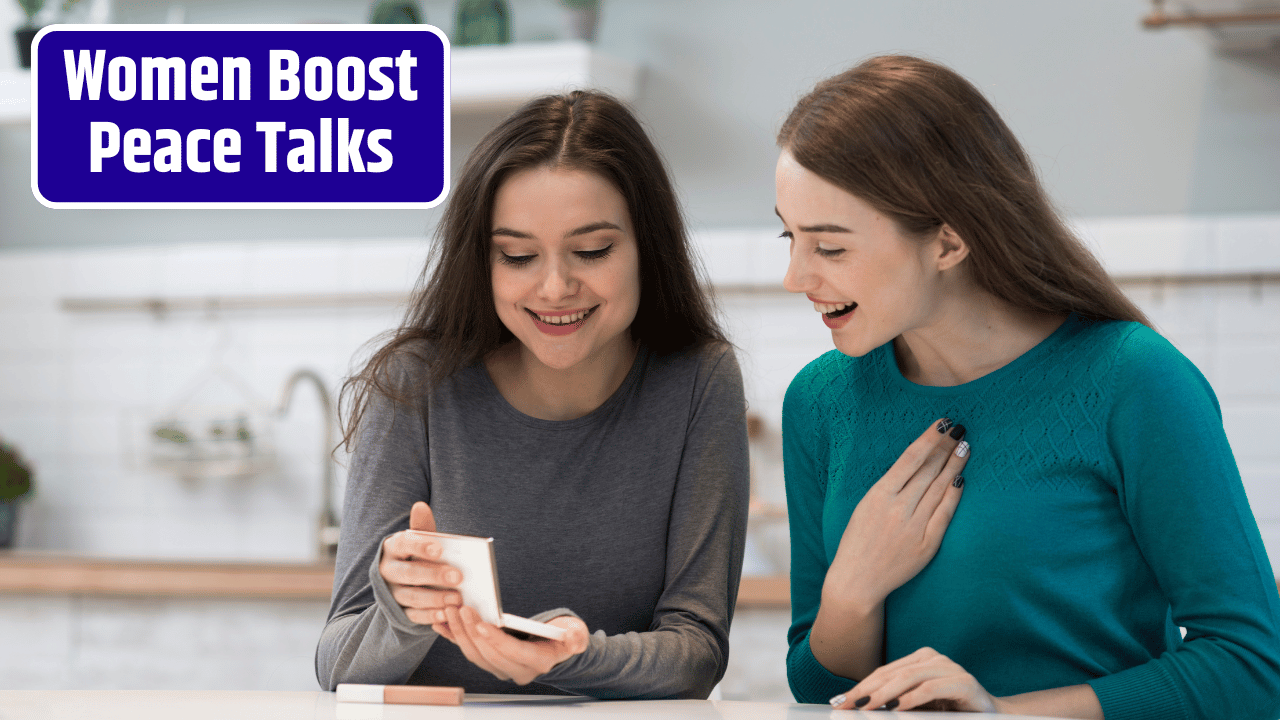Because what global leaders often forget—or conveniently ignore—is that peace isn’t just the absence of bombs. It’s the presence of justice, opportunity, healthcare, safety, and dignity. And when half the population is left out of that process? The whole system is rigged from the jump.
Yet somehow, even in 2025, we’re still seeing all-male panels on conflict resolution. Peace talks that don’t include a single woman. Budgets for reconstruction that funnel 99% of funds into militarized or male-dominated organizations.
We’ve tried that version of peace for decades. It doesn’t hold.
So yeah—experts aren’t just saying women are essential to peace. They’re showing us the receipts. And the evidence is loud.
Table of Contents
A Peace Process Without Women Is Like Building a House With Half the Tools
Picture this: you’re trying to build a stable, long-lasting house. Would you ignore the hammer, the screws, and half the blueprint? That’s what it’s like trying to build peace without women.
Conflicts affect people differently based on gender. Women often bear the brunt of war—sexual violence, economic displacement, loss of family structures—but they’re also the first to organize relief, rebuild communities, and mediate disputes at the grassroots level.
Ignoring their insights? That’s not just exclusion. That’s sabotage.
The Numbers Don’t Lie:
| Involvement of Women | Peace Outcomes |
|---|---|
| Women included in peace negotiations | Peace is 35% more likely to last over 15 years |
| Women-led civil society groups | More likely to address education, healthcare, and justice |
| Countries with higher gender equality | Less likely to go to war |
Sources: UN Women, Georgetown Institute for Women, Peace and Security, World Bank
Why the “Women = Peace” Equation Actually Holds Up
This isn’t about being poetic. It’s about being practical.
Women tend to prioritize social infrastructure in peace deals—think schools, hospitals, food security. Things that actually prevent future conflict. They’re more likely to bridge divides, build coalitions across enemy lines, and stay in communities long after the cameras leave.
Meanwhile, many traditional peace deals—led by former warlords and military leaders—focus on power-sharing and ceasefires. Necessary? Sure. But insufficient. Peace isn’t sustainable when it’s just political. It has to be social and economic too.
And women? They’ve been doing that kind of peacebuilding for centuries—just without the press coverage.
Real Talk: What Happens When Women Are Left Out
Let’s be clear—this isn’t hypothetical. We’ve already seen what happens when women aren’t in the room.
Case 1: Afghanistan
Despite two decades of education and leadership training for Afghan women, when the Taliban peace talks went down in Doha? Women were barely included. The result: a catastrophic rollback of women’s rights, education, employment—basically, everything peace was supposed to protect.
Case 2: South Sudan
Peace talks led by political elites (almost entirely men) failed to consider sexual violence, displacement, or access to services. Surprise: the violence flared back up within months.
Contrast that with…
Case 3: Northern Ireland
Women’s Coalition parties, led by community activists and feminists, helped shape the Good Friday Agreement with a focus on social welfare, victims’ rights, and community healing. Two decades later? The agreement still holds.
Experts Across the Board Agree: Women = Stability
This isn’t some activist fringe idea. Heavy-hitting institutions are on board:
- UN Security Council Resolution 1325: Passed in 2000, recognizes women’s essential role in peace and security.
- World Bank: Finds gender equality is a key predictor of a country’s resilience to conflict.
- Nobel Peace Prize winners: From Leymah Gbowee to Malala Yousafzai, many of the most effective peacebuilders of our era are women who’ve worked outside the halls of power—often at great personal risk.
Even NATO, not exactly known for its feminist vibes, has acknowledged the operational benefits of gender inclusion.
So Why Are Women Still Excluded?
It comes down to three ugly truths:
- Power doesn’t let go easily.
Male-dominated institutions are reluctant to make space unless forced. - Women’s work is undervalued.
Mediation at the local level? Seen as “soft” diplomacy. Never mind that it’s often more effective than high-level talks. - Security = militarization.
As long as peace is defined in terms of weapons and soldiers, women—who are underrepresented in military and defense circles—will continue to be shut out.
We’ve gotta flip the definition of peace itself. Less tanks, more trust. Less top-down, more grassroots.
“Nothing About Us Without Us” Isn’t Just a Catchphrase
Women aren’t asking for a favor—they’re demanding a seat at the table they’ve already been holding up. They’re on the frontlines of war, of caregiving, of rebuilding communities. They’re navigating trauma, organizing aid, and fostering reconciliation.
And guess what? They’re doing it without the funding, the titles, or the global headlines.
Can global peace be achieved without them?
No. Not now, not ever.
Because any peace process that excludes half the population is just a delay in the next war.
FAQs
Isn’t it more important to end conflict quickly, even if women aren’t involved?
Speedy peace deals without inclusion often collapse. Inclusion leads to durable peace, not just quick fixes.
What about cultures where women aren’t traditionally involved in politics?
Cultural norms evolve, especially under pressure. Peace doesn’t stick if it leaves women behind—no matter the culture.
Are there examples where women led successful peace efforts?
Yes. Liberia, Northern Ireland, Colombia—all had women playing pivotal roles in sustainable peace.
Isn’t this just Western feminism being imposed globally?
Not at all. Women’s peace activism is global—from the Pacific Islands to East Africa to the Middle East. It’s not a Western concept; it’s a human one.














